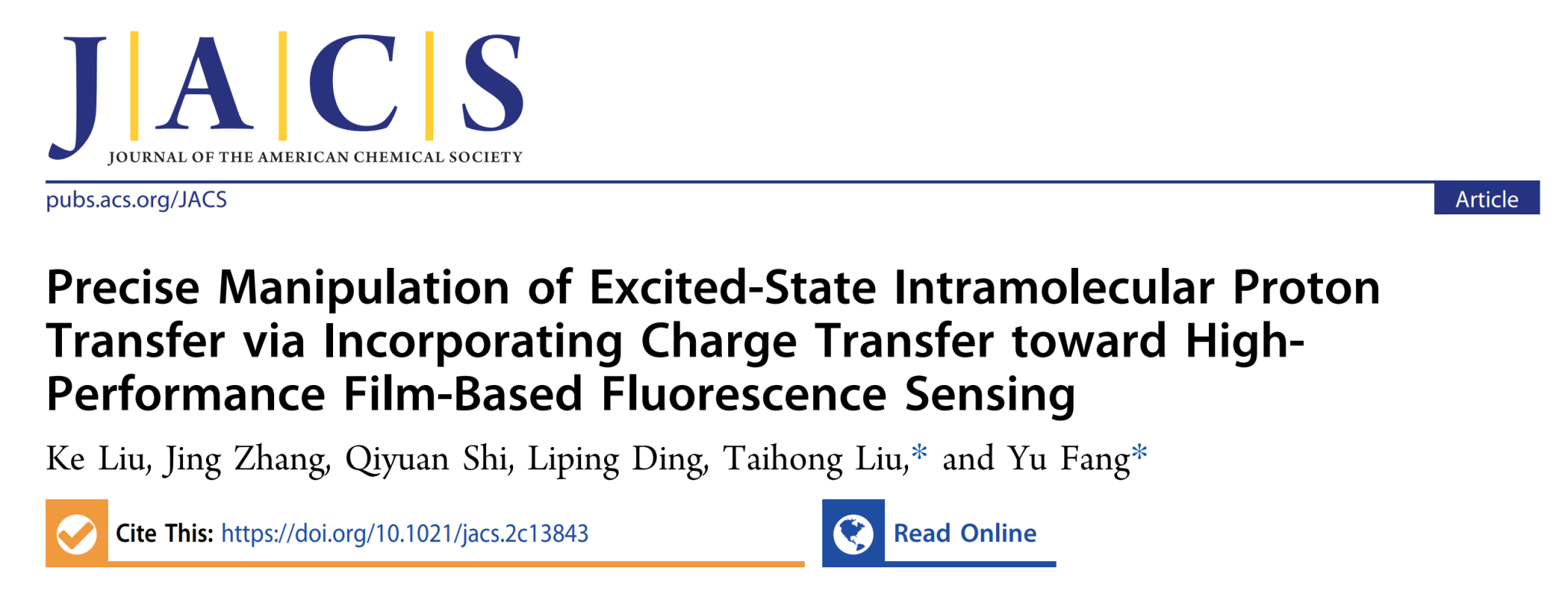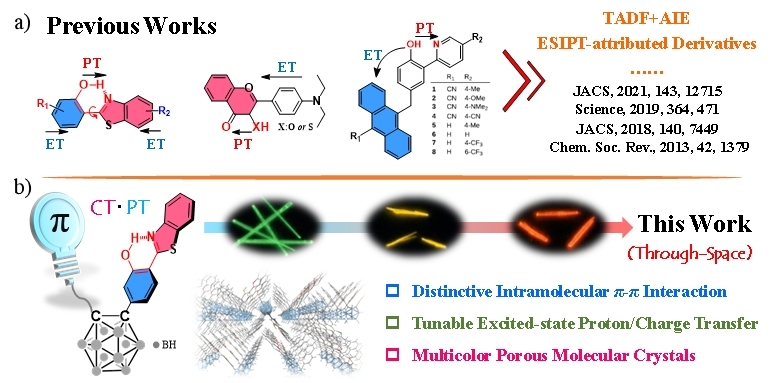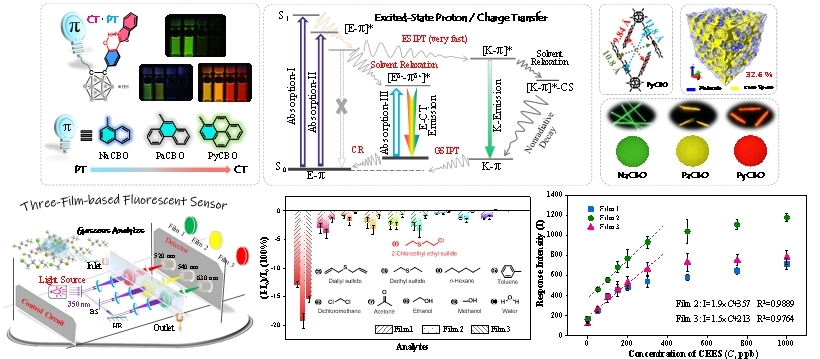
Ke Liu, Jing Zhang, Qiyuan Shi, Liping Ding, Taihong Liu, Yu Fang*. J. Am. Chem. Soc., 2023, 145, 7408-7415.
Being one of the most important and state-of-the-art technologies, film-based fluorescent sensors (FFSs) have achieved great progress and been selected as one of the International Union of Pure and Applied Chemistry (IUPAC) Top Ten Emerging Technologies in Chemistry 2022 owing to their excellent sensing performances, outstanding design-ability, easy integration, etc. However, the performance of the FFSs highly depends on innovative design of sensing fluorophores employed. As is well-known to all, Excited-State Intramolecular Proton Transfer (ESIPT) has been widely employed for the design of a variety of functionality-led molecular systems. However, precise manipulation of the excited-state reaction is challenging.

Figure 1. Present molecular design strategy of intramolecular proton/electron transfer enabled by controlled noncovalent interactions.
Herein, we report a new tactic for tuning ESIPT via incorporating an Excited-State Intramolecular Charge Transfer (ESICT) process. Specifically, three o-carborane derivatives, NaCBO, PaCBO and PyCBO, were designed, where the 2-(2’-hydroxyphenyl)-benzothiazole is a typical ESIPT unit functioning as an electron acceptor, and the electron donating units are naphthyl- (Na), phenanthrenyl- (Pa) and pyrenyl- (Py), respectively. The architectures of the molecules are featured with a face-to-face alignment of the two units. Spectroscopy and theoretical calculation studies revealed that the electron donating capacity of the donors and solvent polarity continuously modulate the ESIPT/ESICT energetics and dynamics, resulted in distinct emissions. Moreover, the molecules depicted not only highly porous structures but also very different fluorescent colors in the solid state, enabling highly selective film-based fluorescent sensing of mustard gas simulant, 2-chloroethyl ethyl sulfide (CEES), with a detection limit of 50 ppb and a response time of 5 s. This work thus provides a reliable strategy for the creation of high-performance sensing fluorophores via ESIPT manipulation.

Figure 2. Photophysical behaviors and sensing performances of the developed fluorophores.
First Author: Dr. Liu Ke, Shaanxi Normal University
Correspondence Authors: Prof. Fang Yu and Assoc. Prof. Liu Taihong, Shaanxi Normal University
Full Text Link: https://pubs.acs.org/doi/10.1021/jacs.2c13843